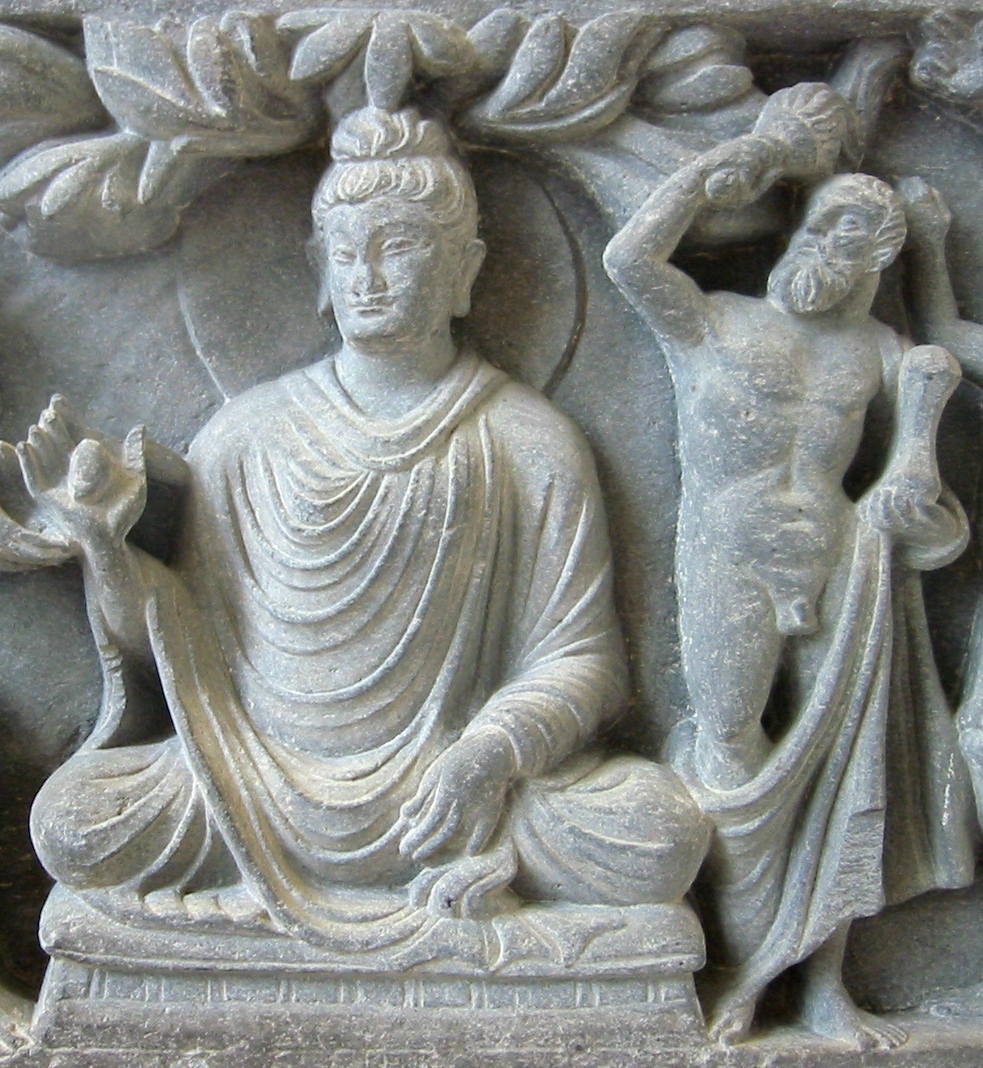 The connection between early Western and Eastern civilizations is far more intimate than most people realize. Indeed, the earliest depictions of the Buddha, from the area around ancient Gandhara in Pakistan, depict him like the statue of a Greek god. Greek culture and influence remained in the areas of Afghanistan and northern India long after Alexander the Great conquered the region; the large Greek population retained the art and philosophy of ancient Greece while marrying into the local population. A beautiful early example of Gandharan art shows the Buddha protected by a hovering Herakles, the Greek hero who the Romans called Hercules.
The connection between early Western and Eastern civilizations is far more intimate than most people realize. Indeed, the earliest depictions of the Buddha, from the area around ancient Gandhara in Pakistan, depict him like the statue of a Greek god. Greek culture and influence remained in the areas of Afghanistan and northern India long after Alexander the Great conquered the region; the large Greek population retained the art and philosophy of ancient Greece while marrying into the local population. A beautiful early example of Gandharan art shows the Buddha protected by a hovering Herakles, the Greek hero who the Romans called Hercules.
In his book The Shape of Ancient Thought, the late scholar Thomas McEvilley details astonishing parallels between ancient Greek and Indian philosophy and spirituality. The similarities in outlook between Socrates and Plato on the one hand, and Upanishad-derived beliefs on the other, are far too great to put down to coincidence. For example, McEvilley describes what he calls the “tripartite doctrine of reincarnation” that held sway amongst philosophers and spiritual leaders in both Greece and India, an idea that played a key role in Buddhism’s outlook and development. He calls it “tripartite” because it contains three key parts: 1) the process of reincarnation, or rebirth; 2) the moral laws governing this process; and 3) the goal of escape from the cycle. McEvilley points out that while belief in reincarnation is found in some form in many cultures, this particular three-aspect set of beliefs was unique, indicating a clear link between the two regions.
Plato, who wrote in detail about this process of reincarnation, was the teacher of Aristotle, who in turn was the tutor of Alexander the Great. Alexander’s conquests in south Asia may have cemented an already long cultural relationship between East and West. Thereafter, Greeks in south Asia embraced Buddhism, and Indians and Greeks both nurtured the religion’s development. Ashoka the Great’s famous monuments, from which we know of his Buddhist empire, were even sometimes written in Greek.
Early Mahayana Buddhism developed in the area where Greek and Indian civilizations came together. I mentioned in a previous blog that early statues at the Dunhuang caves show Gandharan influence. Although the textual evidence of exactly how Buddhism developed in that ancient cultural melting pot are frustratingly absent, the artistic record reveals a profound coming together of East and West in those ancient times.
—Andy Ferguson
This post is part of author and scholar Andy Ferguson’s new “Consider the Source” series. As an old Chinese saying goes, “When drinking water, consider the source.” In the coming weeks, Ferguson will ask and answer seemingly simple (but in the end, profound) questions about the “source” of East Asian Buddhism, weaving a tale of both spiritual inspiration and political intrigue.
This fall, Tricycle will be traveling to the source itself, China, in a special pilgrimage led by Ferguson and abbot of the Village Zendo Roshi Pat Enkyo O’Hara. Want to come with us? Click here for more information.